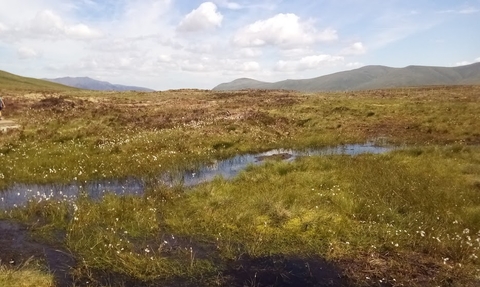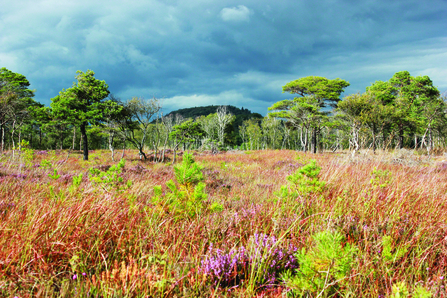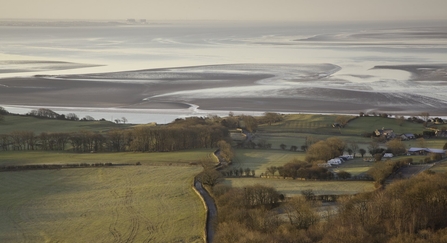
Green Carbon solutions to the climate crisis
Green carbon habitats aren’t just about trees.
Many of our habitats in Cumbria store carbon, mostly in soils. In fact, most of the carbon held in an ancient woodland is in the soil, not in the trees themselves.
This is why it's important to protect our ancient woodlands, peatlands and meadows as there are not many surviving today.
Cumbria Wildlife Trust is working hard to restore degraded green carbon habitats and has staff actively working on the ground every day.
Scroll down to learn more about how these habitats store carbon, as well as supporting wildlife.
Donate to fight the climate crisis

Meathop Moss Nature Reserve near Witherslack
Peatlands
In their natural wet state, peatlands hold carbon in soils that have built up over thousands of years.
When peatlands dry out the carbon combines with oxygen to form CO2 and scientists have estimated that if all the carbon held in the world’s peat soils were released, it would raise CO2 levels by 75%, with catastrophic consequences for global climate.
Peatlands are the UK's largest carbon store, with 28.5 million tonnes in the Lake District alone. Cumbria’s peatlands store five times as much carbon as all Cumbria’s trees put together.

View from Arnside Knott over Morecambe Bay hinterland, Arnside, Cumbria. © Peter Cairns/2020VISION
Meadows
Although biodiverse grasslands store less carbon than seas, woodlands or peatlands, they are a vital player in carbon storage.
Carbon capture in restored grassland can start within two years and continue for perhaps 100 years. This makes grassland restoration a worthy addition to woodland creation, as it can be done on a large scale and can capture and store carbon quickly, whilst allowing continued use in agriculture for grazing or hay production. [Anderson, P., 2021, Carbon and Ecosystems: restoration and creation to capture carbon. CIEEM,
Over 40% of land cover in the UK is grassland. Currently, only 2% of the UK’s grassland comprises biodiverse carbon rich semi-natural grassland. Protecting this grassland is of high importance for biodiversity and avoided emissions. [Norton & McKain]
We’ve been restoring hay meadows in Cumbria for many years - Find out more
Woodlands & hedges
About 1 billion tonnes of carbon are locked up in UK woodlands, mostly in the soils.
Planting more woodlands and allowing natural regeneration could lock up more carbon, but this must be carefully planned to maximise benefits and avoid harming other habitats.
Just 9.9% of Cumbria's land use is woodland, which is close to the national average. Cumbria Wildlife Trust looks after 3.16 km2 of woodland, with an above ground biomass of 19,569 tonnes of CO2 equivalent, and 1,391 tonnes of CO2 taken from the air each year.
As well as looking after woodlands on our nature reserve we are creating and expanding new ones.
At Eycott Hill Nature Reserve we planted hedgerows and upland woodland. In total 13,000 native broadleaf trees, hedgerow species and juniper scrub were planted. Read more about Eycott Hill Nature Reserve
Staveley Woodlands is a collection of woodlands including Craggy Wood and Dorothy Farrers Spring Wood. When we were gifted Craggy Wood, we were also given some agricultural land to link Craggy Wood with the rest of the Staveley Woodlands.
So far 600 native trees have been planted. Seed was collected from the woodlands and grown-on into saplings by local people. Read more about Staveley Woodlands and how you can help it thrive
